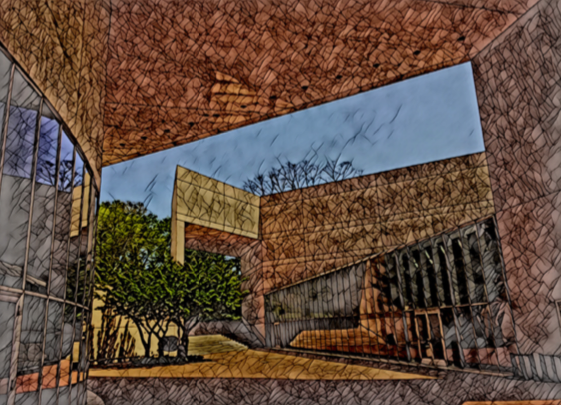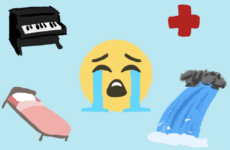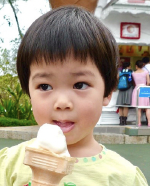The Directed Study program allows motivated students to create their own academic course in a topic that interests them. During the winter term, students undertook twelve such programs:
Advanced Playwriting and Screenwriting
Mattie Drucker ’17, Elena Levin ’17, Ms. Kate Doak
After taking Playwriting and Screenwriting, Levin and Drucker created this Directed Study with the goal of writing a full-length (approximately 90-page) screenplay. They worked with Ms. Doak to develop a script and produce an effective plot arc. According to Levin, “Ms. Doak has a lot of experience writing and teaching and was very helpful in putting us in the right direction.” Levin’s advice? “To anyone setting out to do a Directed Study, be mindful that a term is very short. We ended up not doing a lot of the things we said we would initially do because of time restraints.”
Data Science and Computational Systems, Theory and Practice
Zev Nicolai-Scanio ’18, Dr. Matthew Bardoe
This Directed Study focused on machine learning within computer science — specifically, image identification and processing. The goal was to create a model of an artificial neural network and write an algorithm that, when given an image by a certain artist and a target image, could render the target image as if it had been created by the artist. Nicolai-Scanio said, “There aren’t any textbooks in this field, so I was working from research papers that had been published two weeks ago.” Nicolai-Scanio enjoyed the ability to work alongside developing discoveries. “Find the thing you’re doing in your free time, and if that’s your passion, it’s the perfect opportunity to create a Directed Study,” Nicolai-Scanio said to students considering the program.
Design and Analysis of Algorithms
Sam Markowitz ’17, Jessica Shi ’17, Ms. Katie Jewett
Having completed most computer science courses offered by Choate, Shi wanted to “explore the subject in more rigorous, theoretical ways.” She and Markowitz decided to trek twice a week to Yale to attend lectures on topics such as the stable matching problem, minimum spanning trees, dynamic programming, network flow and non-deterministic polynomial time (NP) hard problems. To assess their knowledge, they complete weekly problem sets and tests — exactly as Yale students would. There is no culminating project, and the class continues until late April because Yale operates on a semester system.
Forensic Psychology
Nicole Yao ’18, Mr. Jim Davidson
Regarding her interest in forensic psychology, Yao admitted that TV shows such as Criminal Minds and How to Get Away with Murder were what initially led her to the field. In her Directed Study, Yao covered the basics of forensic psychology with an emphasis on eyewitness testimony and identification, and juries as decision makers. For her culminating project, Yao analyzed a 1985 sexual assault trial in which the defendant was wrongfully convicted of sexual assault. Regarding the differences between a normal class and a Directed Study, Yao stated that “There’s definitely a lot more freedom in a Directed Study.” Mr. Davidson agreed: “I’m much more of a coach than a shepherd when teaching a Directed Study.”
Genocide and the Law
Charlotte Beebe ’17, Mr. Joel Backon
Traveling to Rwanda her freshman year and possessing an acute interest in Law and Criminal Justice led Beebe to design this Directed Study about the Rwandan Genocide of 1994 and the Bosnian Genocide of 1995. She analyzed the two genocides through the lens of the bystander effect and U.S. foreign policy and wrote a ten-page paper comparing and contrasting the genocides for her final project. Regarding her adviser, she said, “Mr. Backon went above and beyond for me. He learned with me, which was the beauty of the study.”
Locating the Self
Kristen Altman ’18, Ms. Ellen Devine
As a fifth former with Intensive Creative Writing under her belt, Altman undertook this Directed Study to further her skills in nonfiction prose writing. Working with Ms. Devine, Altman completed weekly reading and writing assignments centered around personal identity within literature. By writing nonfiction stories, the study helped Altman become more mindful as a writer and a thinker. For her culminating project, Altman composed a 25-page portfolio of revised written work throughout the term.
Neuromarketing, Neuroeconomics and Consumer Behavior
Bryce Wachtell ’17, Dr. Allison Nishitani
“It examined the intersection between marketing, business, and cognitive neuroscience,” Wachtell said of his Directed Study. Working with Dr. Nishitani, he produced a 25-minute podcast, described by Wachtell as “a snapshot of the ongoing research in the fields.” Dr. Nishitani said, “Listening to the podcast was the most impactful part of the experience for me. Bryce worked really hard to ensure that his podcast conveyed important information, but in an accessible and entertaining way.” Speaking of his experience, Wachtell said, “You get to change the syllabus according to the demands of the term, working alongside your adviser almost as a second teacher in the course.”
Procedural Generation
Alan Luo ’18, Ms. Meghan Healey
Luo’s Directed Study covered computer science algorithms that allow the user to generate complex results from a simple input. For his final project, Luo coded a game that generates a planet for the user to explore. “Each time you load the game, a different planet is generated, with clouds, trees, boxes, and so on,” said Luo. “It’s not hard coded in; everything randomly generates.” Luo encouraged students to take advantage of the program. He said, “There’s a preconception that Directed Studies are only done by the ‘smartest’ people, but they can be done in any topic, require no prior skill, and open up research that both the student and the adviser are interested in.”
Punk’s History
Leander Vergara ’17, Mr. Andrew Arcand
Is punk history? This was the essential question of Vergara’s Directed Study. The significance of the study’s name, “Punk’s History,” is twofold: it implies a study of punk rock since its development in the 1970s, and that punk is history. Vergara’s culminating project was a website of research he did throughout the term. To craft the site, Vergara wrote reviews on books and movies, embedded Spotify playlists, and created a timeline of punk rock’s history. He also plans to add original work to the website, including a four-song extended play (EP) of his creation.
Quantum Physics and Beyond
Lindsay Ning ‘17, Ms. Katie Jewett
Twice a week for three months (thus far), Ning has taken an Uber to and from Yale to learn about quantum physics in its chronological order of development. In her 20-person class, Ning is held to the same standard as the Yale students: she completes weekly problem sets, and attends lectures and discussion sessions. Ning, a veteran of the Directed Studies Program, decided to go to Yale because she couldn’t find any teacher on campus to teach quantum physics. She describes her class as “bigger but very similar to a Directed Study” and ultimately concluded that “it’s a big time and money commitment that you should take only if you can’t do a Directed Study at Choate.”
Study of Post-WWII Japanese and American Horror Film
Ben Wendel ’17, Sabrina Xie ’17, Mr. Bob Mellon
In this directed study, Wendel and Xie watched a movie every week to create a picture of America and Japan post-WWII. “I wanted to do this Directed Study because people disregard a lot of films as not relevant to historical discussions,” said Xie. “I wanted to examine them in an academic way to make it more legitimate.” For her culminating project, Xie wrote an approximately 30-page paper about Japan and American post-war society by analyzing Godzilla and The Beast from 20000 Fathoms — respective American and Japanese films that are extremely similar and came out in the same time period.
Tools of Computer Science
George Wildridge ’17, Dr. Matthew Bardoe
Wildridge’s Directed Study focused on the math behind complex computer science. “I’ve done research at Yale for the past three summers in computer science, and a lot of times, I had difficulty because I didn’t know enough math,” Wildridge explained. Describing his final project, he said, “I created this game that incorporated a lot of the game theory we covered in the course. You can play it on your computer, and the computer can play you.” Wildridge said that while he met with Dr. Bardoe twice a week, most work was completed outside of class meetings. “The biggest difference was that when I didn’t understand something, we could go over it. In most classes, you don’t get to do that,” Wildridge said.




